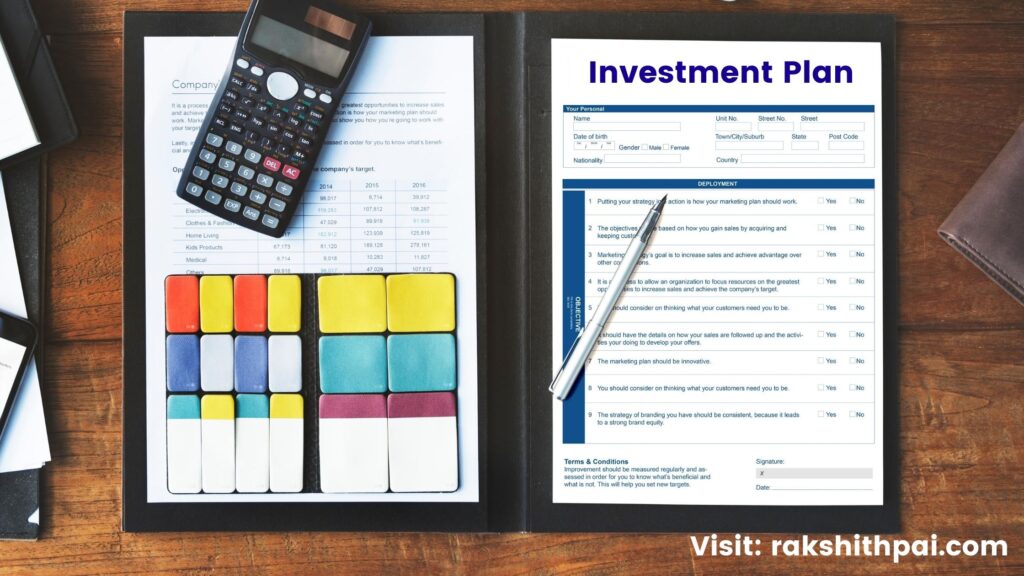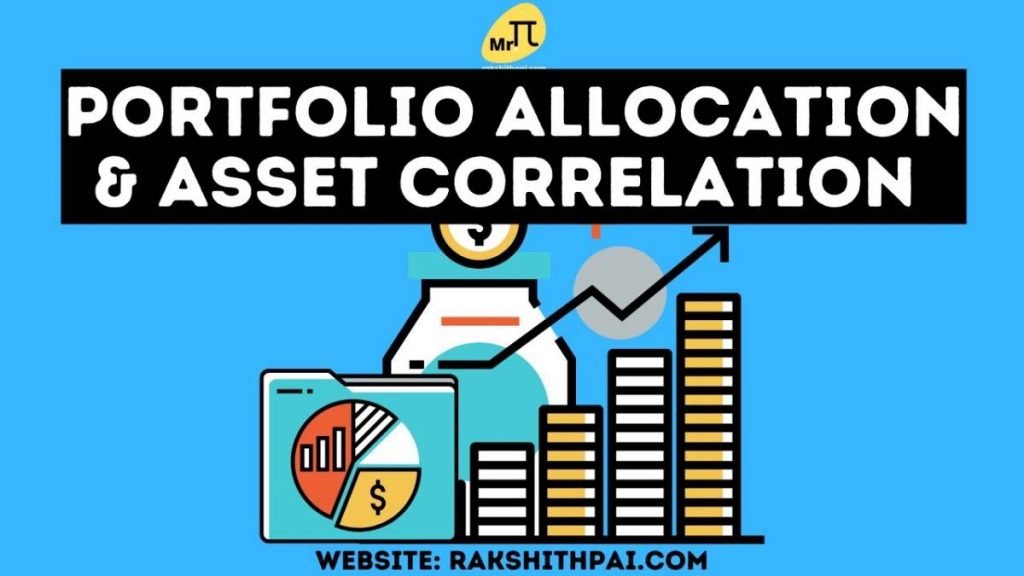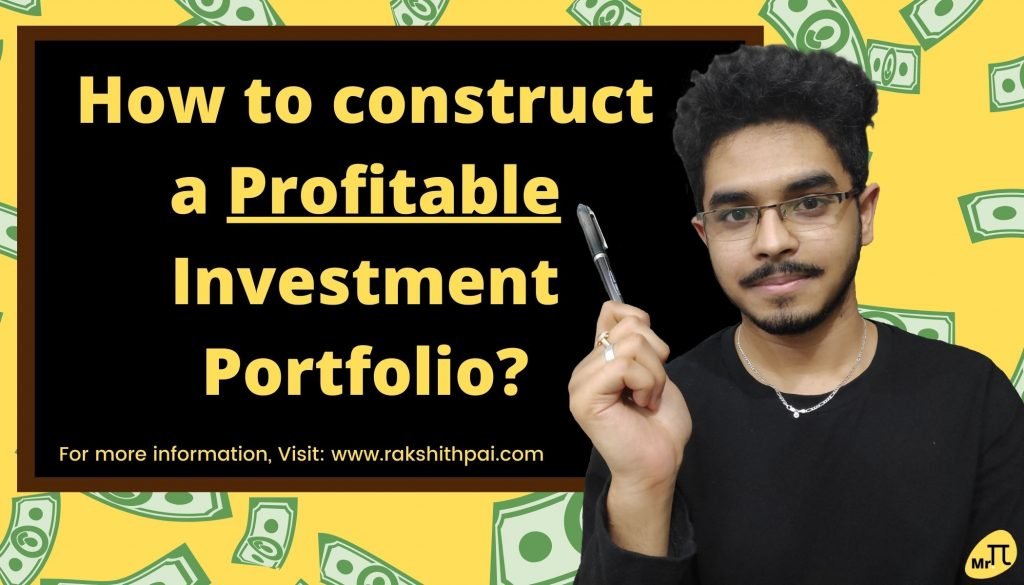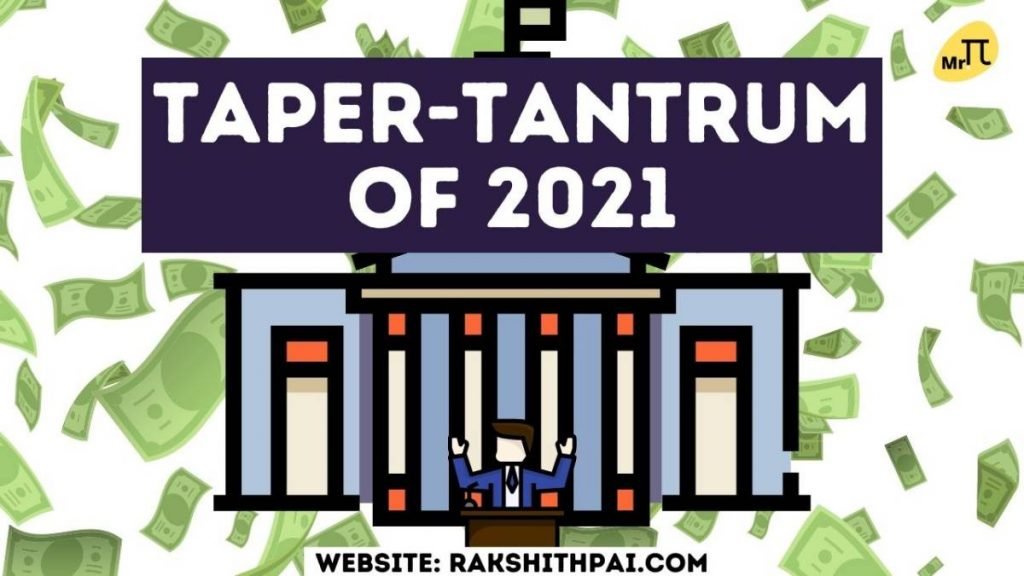Table of Contents
Why Investing is Important?
India has a population of over 1.35 billion (Over 135 crores). And, the Indian middle-class population is the size of the entire US population with over 350 million (35 crores) in numbers. With income inequality on the rise, the middle-class population will bear most of the tax and other financial burdens to befall. This COVID-based pandemic has created much more financial stress on each and every individual in the middle class and lower segment of our economy.
To overcome the issue, An individual has to have multiple sources of income. One that provides an increased standard of living. One that provides wealth over a sustained period of time. And to not only have the best investment that’s well-diversified into various assets but, the same has to provide a better return that’s over and above-average inflation rate.
Factors to be considered before investing:
- Financial Literacy – It is to own certain skills and knowledge to make one’s decision in an informed manner. Skill to manage one’s personal financial matters and take prudent decisions accordingly. Especially, when it comes to equity investment. One has to have a clear understanding in regard to the equity value he/she purchases. Major components of being Financially literate;
- High priority for savings. None has gotten rich by spending!
- Understanding various financial instruments. (Given in detail in the latter part of this article).
- Understanding how the economy works. (Stick with this website to know more).
- Disciplined investing, into diversified asset allocation.
- Investment Time Horizon – It is the time period an investor expects to hold an investment before liquifying for cash. Each and every investment asset is unique, the strategy changes, and the way we see it entirely changes. So, based on one’s time comfort, and investment interest. The assets he/she wishes to own change.
Example – An individual in his/her 20’s can allocate most of his/her portfolio into equities. But, the same is termed risky is done by someone at their retirement days. Because equity investments are always termed risky.
- Risk-Return Analysis – The trick is to own an investment that provides maximum return with minimum risk. ‘An investment made without risk analysis is like touching a burning wood and expecting not to get hurt.’ Each and every rupee we invest is hard-earned, it’s our responsibility to invest it due diligently.
- Wealth Goals – Every one of us has our wealth goals. Some of us dream to own certain assets at a certain age period. Wealth goal is the driving factor in investing. It gives us the courage and motivation to continue in doing what’s working.
- Investing Strategy – When we say strategy, it’s just how well you allocate your money to the various asset classes mentioned below. It is a guide to investing. A set of pre-written rules, a set of behavioral traits an investor possesses. Investing strategy can also be read as different ways of investing such as ‘Value Investing’ & ‘Dividend Investing’ and many more such methods.
There are three phases of investing:
- Need-based Investing – In this phase, investing is a need. It is something that you long for. Something that’s you and can’t be separated from yourself. An individual does this type of investing without any knowledge in specific. It either happens or he/she does it as a way of life.
- Specific goal-based Investing – In this phase of investing, an individual sees value in some asset class. He/she wants to achieve a certain wealth to own a particular asset. For example, to own a house. A goal will be set, and an individual will invest to meet the specific goal.
- Investing for Wealth creation – This is the phase that an individual should be in. A phase that pushes you to your extreme end. One that makes you work harder and smarter to reach your required wealth. In this phase, you’ll be completely into investing and see it as a way to get freedom. We call it “To seek Financial freedom”.
Three qualities to possess to be a successful investor:
- Conviction to hold an Investment.
- Emotional discipline.
- Ability to bear the risk.
Budgeting with a 50-30-20 rule.
- Allocate 50% to your needs and wants. We die once, but we live until then. Why live frugally to death when you can allocate well in a diversified investment portfolio whilst having a fruitful life? The key is to start early into investing. We all have our financial commitments, and only you can decide what’s a financial obligation and what differs from the other.
- 30% of your post-tax salary and other forms of income should go into your investments. The one that gives you a peaceful sleep at night for your retirement is taken care of. Invest due diligently. ‘Every rupee saved is a rupee earned’ is an old saying. It’s more like ‘Every rupee saved and invested is a rupee grown’.
- The last part of your earnings, 20% should always be allocated to liquid assets. Yes, the investments made into such assets are easily available for disposal. They can be easily converted into cash and are a great form of earnings. These assets are easily convertible into currency whilst the same are value-adding assets when invested. They tend to give reasonable returns over time. Examples are bank savings account, Money market instruments, Equity & debt securities (listed), etc.
As said, Investing in well-diversified assets will provide better returns over time. One has to seriously consider investing in a major tax-free investment pool. The below-mentioned table provides a complete list of various assets one can invest in, the time horizon for investment, and its risk-return analysis. We have also provided our remarks at the end.
Top 20 Best Investment Plans for Indian Middle-Class Population:
| Sl.no | Investment asset | Return (Expected) | Risk (Expected) | Time Horizon | Tax Implications |
|---|---|---|---|---|---|
| 1 | Direct Equity Investment | Relative. | High Risk | Relative. | Exempt upto Rs.1 lakh; Excess of which is taxable at 10%. |
| 2 | Public Provident Fund (PPF) | 7.90% | No Risk | 15 Years | Deductions upto Rs. 1.5 lakh u/s 80C; Fully exempt from Tax. |
| 3 | National Pension Scheme (NPS) | 10% - 12% | Low to Moderate | 18 - 65 Years | Deductions upto Rs. 1.5 lakh u/s 80C; Additional deduction Rs. 50k u/s 80 CCD(1B). |
| 4 | Senior Citizens Saving Scheme (SCSS) | 7.5% - 8.5% | No Risk | 5 Years | Deductions upto Rs. 1.5 lakh u/s 80C; Interest is fully taxable. |
| 5 | Mutual Fund Investing | Relative. | Moderate Risk | Relative. | Deductions upto Rs. 1.5 lakh u/s 80C (Under ELSS funds). Qualifies Capital Gains tax. |
| 6 | Sovereign Gold Bond (SGB) | 2.5% (+) Relative. | Low Risk | 8 Years | Only Interest is taxable. |
| 7 | Index Investing | Relative. | Moderate Risk | Relative. | Qualifies Capital Gains tax. |
| 8 | ETF Investing | Relative. | Moderate Risk | Relative. | Qualifies Capital Gains tax. |
| 9 | Fixed Deposit Schemes | 6% - 7% | No Risk | 7 Days | Deductions upto Rs. 1.5 lakh u/s 80C. |
| 10 | Government Securities | 6% - 8% | Low Risk | 5 - 40 Years | Deductions upto Rs. 1.5 lakh u/s 80C. |
| 11 | Unit Linked Insurance Plan (ULIP) | Relative. | Moderate Risk | 5 Years | Deductions upto Rs. 1.5 lakh u/s 80C; Additionally, the returns are exempt u/s 10(10D). |
| 12 | Pradhan Manthri Vaya Vandana Yojana (PMVVY) | 8% | Low Risk | Relative. | Not eligible for Deduction. Taxable based on slab rates. |
| 13 | Hybrid Funds | Relative. | Moderate Risk | Relative. | Deductions upto Rs. 1.5 lakh u/s 80C. Qualifies Capital Gains tax. |
| 14 | RBI Bonds | 7.15% | Low Risk | 7 Years | Qualifies Capital Gains tax; Interest on bonds is fully taxable. |
| 15 | Real Estate Investing | Relative. | Moderate Risk | Relative. | Qualifies Capital Gains tax. |
| 16 | Post Office Monthly Income Scheme (POMIS) | 6.5% - 7% | Low Risk | 5 Years | Not eligible for Deduction. Taxable based on slab rates. |
| 17 | Bullion Investing | Relative. | Moderate Risk | Relative. | Qualifies Capital Gains tax. |
| 18 | Savings Account | 3% - 4% | No Risk | Relative. | Deductions upto Rs. 10,000 u/s 80TTA. Taxable based on slab rates. |
| 19 | Recurring Deposit Account | 6% - 7% | No Risk | 6 Months | Deductions upto Rs. 10,000 u/s 80TTA. Taxable based on slab rates. |
| 20 | Crypto Investment | Relative. | High Risk | Relative. | May not be treated under Capital Gain. But, it is taxable. |
Please note: The list is non-exhaustive, rates and returns may change over time.
Equity Investment:
An investment is made into the equity of the company to gain ownership of shares. An investor to invest in shares becomes a shareholder of a company he/she wishes to invest in. Each share represents a piece of the business and hence, equity investment has to be done post seeking professional advice.
Indian investors investing in the equity market are very small in percentage. Less than 2% of our population invests in the Stock Market. Compared to the United States, where over 20% of earning adults invest in the Stock market. And over 10% of Chinese investment in their Stock market. There is a huge opportunity for the next few decades for Indian Equity investors.
The riskiest form of investing is investing in the Stock market (If done without knowledge). But, remember this, there is no asset class that can give such a good return year after year (If invested well) than equity investing.
Types of Investing in the Equity market (Well known list):
- Value Investing.
- Penny picking.
- Dividend Investing.
- Blue-chip pick.
How can I invest in the Share market in India?
- PAN Card or Aadhar Card is the primary document. Own one and if you are 18+. You are eligible to open a Demat account.
- Get a Demat account registered under well-known brokerage services such as “Zerodha”, “Sharekhan”, “5paisa”, “Upstox” and many more.
- Once registered under any brokerage services, you can easily trade or invest in various listed stocks in India.
Yes, it is that simple. Open your brokerage account under India’s top brokerage service here.
Public Provident Fund (PPF):
Most secure and reliable form of investing. With a tenure period of 15 years, it builds concentrated savings and provides over 9% interest per annum (Interest rates vary). You also get a tax deduction u/s 80C up to a limit of Rs.1,50,000. Further, both the investment and the interest amount are well secured for they are backed by the sovereign guarantee. Other than PPF, the options are the Recognized Provident Fund (RPF) and the Unrecognized Provident Fund (URPF).
One of the well-known wealth preservers, the PPF is well recognized amongst investors. Max up your investment eligibility into PPF to gain full deductions under 80C. Any withdrawal between the first 5 years is liable for the tax. And it is suggested to maintain the PF account even after the maturity period of 15 years.
Investment into PPF is rated triple “E” (Exempt for the tax if invested, exempt for tax over returns earned, and exempt for tax over maturity). Small savings in such schemes are the backbone of India’s saving system. If it is provided by your employer, make full use of it. If not, check out RPF and URPF. (More into the topic will be updated in the coming days, Subscribe to the website).
National Pension Scheme (NPS):
It is a savings and pension and investment scheme in one basket. Under the guidance and purview of the Pension Fund Regulatory and Development Authority (PFRDA), the amount is invested in various equity, bonds, and other assets. NPS is a government-backed asset, that allows an investor to purchase various market-linked equity & debt securities.
Investment is a low-moderate risk asset. Investment into the asset can be made by any individual age ranging from 18 – 65 years. It also provides a deduction u/s 80C up to the limit of Rs.1,50,000. And, an additional deduction u/s 80 CCD(1B) up to the limit of Rs. 50,000. NPS provides a decent return to the investor, a comfortable return of 8% – 10% is achievable.
Senior Citizens Saving Scheme (SCSS):
A five (V) year savings scheme is specifically available for senior citizens in India. A highly safe investment cum savings scheme that provides interest over 7.5%. It is a 5 years scheme for those individuals aged 60 years and more, the savings scheme can be extended every 3 years once upon request.
Investment or savings up of retirement cash in SCSS can provide better returns with optimum savings to senior citizens. It also provides a deduction u/s 80C up to the limit of Rs.1,50,000. Additionally, senior citizens can claim a deduction of Rs. 50,000 u/s 80TTB. An investment cum savings of a maximum of Rs. 15 lakh is allowed and the option to open several accounts is allowed. A relatively flexible form of savings specifically designed for the senior citizens of India. It is well-designed and highly suggested for those with spare cash to save.
Mutual Fund Investing:
Investment in Mutual funds is subject to market risk. They are Equity and debt investment asset managed by professional investors whilst providing service to the investors (not interested to invest directly into equity on their own). The returns generated are purely based on market conditions and asset allocation. Mutual fund investments are for those investors who do not possess the required expertise to invest on their own.
Although, they are relatively safer than direct equity investment. If interested to invest, one should stick with the same mutual fund for a considerable time span to gain actual wealth. A systematic investment plan (SIP), is an investment vehicle offered by Mutual funds. It is to invest in the fund at periodic intervals. A well-diversified asset can provide better returns over time and consistency in SIP.
It is to find value in the investment we purchase. As in equity investing, we tend to find value in our purchases. The same logic is for Mutual fund investing where we find value in the way the fund manager manages the assets allocated.
Indexation benefits, (With hypothetical scenario) As an example.
You as an investor invest in a well-diversified mutual fund in the year 2011 at a cost of Rs.10 lakh. In the year 2013, if you sell the units (Mutual funds investments are measured in units) for Rs. 12 lakh. A 20% return on investment over 3 years span. The investment return will be taxed on the indexation basis in the amount of Rs. 12 lakh as below.
Investment – Rs. 10 lakh.
At, Rs. 10,00,000 * 852/711 = Rs. 11,98,321,24
Indexed cost = Rs. 10 lakh (x) 852 (2013 indexed cost of investment) /711 (2011 indexed cost of investment) = Rs. 11,98,321,24 and the same is not taxed on the 12 lakh earned.
Sovereign Gold Bond (SGB):
SGBs are the government securities issued by the Reserve Bank of India (RBI) denominated in terms of Gold on a per gram basis. Instead of purchasing actual metal, which constitutes an intrinsic risk. Investors can purchase SGBs as a substitute. It is an asset to be invested in, a mode of diversification that’s less risky. Gold is the best hedge against inflation.
The bonds will be denominated in multiples of grams of Gold (In multiple of 1 gram and over). Hence, the minimum permissible investment to be made is 1 gram. A maximum of 4 kg per individual is allowed. With low risk and a comfortable return to the investor, SGB is one of the most favorable options. An interest of 2.5% per annum will be provided to the holder of SGBs. The same might be less than the Savings deposit return (3.5% – 4%), It is more favorable than actual gold purchases, and it is traded on gold price (3 business day gold price as quoted). Hence, as and when gold price increases (for it surely seems to). The SGB will quote a higher price in the coming days.
With no TDS or Capital Gain tax at the time of maturity, only the interest part of the investment is taxed on the basis of the slab rate. The only drawback noted is it is not very flexible. While the maturity period for the investment is at 8 years. Investors can offload their holdings in SGBs at the end of their 5th year and later.
Index Investing:
Generally invested in various equity and fixed income-generating assets. Index investing is one of the best-known passive investing strategies. Index funds are those baskets of known companies listed, ones that are listed in the Indian stock market. Simple index investing has a pretty good chance of beating the market over the long term. And, as mentioned in Mutual fund investing. The Index fund also has to be approached as in SIP.
Index fund investing provides greater diversification and thus less volatility in earnings return. Its management charges are minimum comparatively. Well, known indexes in India are; NIFTY & SENSEX. Risk is moderately relative for it is highly based on market conditions.
It is a list of well-established stocks and known bonds put together. Index investing is a passive form of investing, without much active participation. With much lower maintenance costs and lower taxes. It is one of the best ways for asset diversification. One can consider investing via an Index.
ETF Investing:
Known as Exchange Traded Fund, The ETF is traded on the stock exchange with an underlying asset. A basket of securities, be it equity or debt. Traded actively on the stock exchange. A basket of stocks & debt instruments. Where Index investing can be much similar to Mutual fund investing. We can compare an ETF to individual stocks.
Nifty is a set of well-established companies in various sectors. Nifty stands for the top 50 Indian companies, they can be said to be the market leaders amongst their peers. Wherein, the ETF replicates the Nifty companies with sectoral weightage and investment accordingly. Hence, the ETF correlates more with the Index on which it’s based. Risk is moderately relative for it is highly based on market conditions.
Fixed Deposit Schemes:
A Financial instrument is provided by banking and financial institutions such as NBFCs, Housing Finance Companies, Cooperative banks, and such institutions. FDs are a form of savings that provides a better rate of return for a longer period of committed savings. Although the FD ranges from 7 days to several years. The key aspect is one cannot break the deposit in between the maturity without paying a penalty.
The Fixed Deposit is the safest form of investment with a return ranging from 6% to over 7.5%. Easily beating Inflation in India. But, It does not help one to create the required amount of wealth.
Inflation average rate = 6% – 7% on an annual basis.
FD return = 6% – 7.5% on an annual basis.
To the max, an individual can break even net earnings in real money of over 0.5% to 1% on an annual basis. Which will never provide for optimum wealth.
To overcome this, emergency savings in the FD can be suggested. But, the same cannot be considered as an investment asset class for wealth creation. Various tax-saving fixed deposit schemes are eligible for deductions u/s 80C up to a maximum of Rs. 1,50,000.
Government Securities:
A low-risk investment asset class, issued by the Indian government issued primarily to raise funds via RBI-issued bonds and security instruments. The Treasury bills or bonds issued by the RBI are a form of debt obligations by the GOI, to be settled upon maturity. A low-risk investment option provides a better return to the investors at much stronger safety or security, which is what investors wish for. With a return of 6% – 8% on an annual basis, with a 100% credit risk-free investment option. G-Sec is a better option for investors.
A better form of Fixed deposit, the government securities provide options to park one’s amount in the asset for 5 years to 40 years. Offering better rates of return to the investors. The G-Sec is a much more favorable option than any FD. Although packed with some amount of market risk, the G-Secs might not be as safe as Fixed Deposit.
Government securities with a maturity period of less than 1 year are called Treasury bills (T-Bills) and those with a maturity period of over 1 year are called Bonds. You can invest directly into government securities, via Zerodha coinbase.
Open an account in Zerodha and start your investment.
Unit Linked Insurance Plan (ULIP):
A unit-linked Insurance-based investment plan. Best suited for those individuals who long for such an asset that is insurance-centric. Amounts deposited and invested under such plans are invested into various bonds and other equity and debt-oriented securities. Under the ULIP, an investor will not only get a diversified investment portfolio managed by professionals. He/She will also get insurance benefits.
ULIP is a passive investment scheme, much like a mutual fund and index fund investing. An investor has to be consistent in his/her contribution over a sustained period of time to own a well-diversified asset. A well-suited plan for individuals with a long-term view of investing.
As far as tax benefits are concerned, The ULIP provides deductions of up to Rs. 1.5 lakh u/s 80C. And additionally, the returns (the entire amount at the maturity period) are exempt u/s 10(10D). An investment made will provide around 10X life coverage benefits (May vary with rates).
Example of Life coverage benefits;
Suppose an individual invests at a premium of Rs. 1,00,000 into the asset. He/She can expect an insurance life coverage of over Rs. 10,00,000.
Along with this, tax benefits and additional deductions can provide a great way of a savings-investment plan for any middle-class individual. A better return providing assets with double tax benefits and safety for life is the best option available. The only drawback under this asset class is that it has a lock-in period of 5 years. Hence, it is a pure long-term asset.
Pradhan Manthri Vaya Vandana Yojana (PMVVY):
A LIC-linked investment opportunity specifically designed for aged individuals, senior citizens in India can invest in this investment option and expect an annual interest of 7% – 8.5%. The uniqueness of this scheme is that it accepts a lump sum investment to be made that ranges from Rs. 1.5 lakh to over Rs. 7.5 lakh. Likewise, a regular interest income can vary from Rs. 1k to Rs. 5k per month. The subscribers will get an assured pension based on a guaranteed rate of return of 8% per annum, receivable monthly.
A one-time investment scheme that provides regular interest income for over 10 years. It is a low-risk asset specifically designed for senior citizens. It is not eligible for deduction u/s 80. And the entire interest income is taxable based on slab rates.
Hybrid Funds:
As the word suggests, it is a hybrid investment asset vehicle. A mix between two or more asset classes such as equity, debt bonds, and others. A type of balanced fund. Because of their diversification, Hybrid funds are better than equity-focused funds when in terms of safety. The high volatility in the market is saved due to bond concentration. It is a pure game of asset allocation.
Highly suggested for investment at times when the market is a bit shaky and volatile. Any individual who prefers a safer form of investment can turn to hybrid funds. Where the allocation can be at 50-50, 60-40, or otherwise into equity & debt. An ELSS (Equity Linked Savings Scheme) allows an individual to claim deductions u/s 80C at Rs. 1,50,000.
RBI Bonds:
Also known as RBI Floating Rate Savings Bonds is one of the safest forms of investing in RBI-authorized bonds. These bonds will provide an annual interest income of 7.15% on a semi-annual basis (June & December). The income earned is non-cumulative. The interest earned is directly transferred into your savings account. The bonds are issued by the banks and they carry a maturity period of 7 years.
Those with a long-term view of investing with a safe and steady expectation of return can invest in such bonds to earn a reasonable income of 7.15% per annum. As mentioned, the rates are floating. If the National Savings Certificate (NSC) rates increase, the rate to reflect on the RBI bonds rate with a difference of 35 basis points. I.e, the RBI rate is 0.35% higher than the NSC scheme. Interest income on bonds is fully taxable.
Real Estate Investing:
One type of investing that I need not explain much. Each of us dreams of owning a piece of land and investing in the same is known as real estate investing. Investing in such an asset refers to the purchase, ownership, and management of land on a sale or rental basis for profit. (More into Real estate investing will be in the coming articles. Subscribe for more).
Post Office Monthly Income Scheme (POMIS):
A government-backed savings scheme issued via a post office savings account. The scheme allows investors to set aside and save a certain amount of income every month. The rate of interest is much higher than that of bank savings. It is one of the few schemes that provide an opportunity for each and every age group of investors to own a savings account that provides monthly income.
Any individual can deposit a lump sum amount of Rs. 1 thousand to a maximum ofRs.4.5 lakh. The same shall be deposited into the scheme for a tenure of 5 years. And, the savings account shall provide interest income to the investor at a rate of 6.5% – 7% (rates shall vary) credited monthly calculated based on the annually. No such tax deductions are provided and the interest income shall be taxable as per the slab rate applicable (Tax exemption available for senior citizens only).
Bullion Investing:
Investing in precious metals is known as bullion investing. Purchase of Gold and Silver coins, bars, and other minted metals for investment purposes. Purely based on the market price of gold and silver (excluding making charges), these investments are a perfect hedge against inflation if done over a long period of time. When investing, an individual has to not consider the design and markings of the asset but purely invest based on the base metal quality and quantity.
It is a defensive strategy used by various veteran investors. Who suggests holding the precious metals in one’s portfolio at an average of 10% in the entire holdings?
Savings Account:
Bank savings accounts are maintained under the regulations of the banking Act 1949. It is a simple saving and withdrawal account with regulated access. Provides an interest income of 3% – 4% on an annual basis. The interest income is eligible for deductions up to Rs. 10,000 u/s 80TTA. And, excess income is taxable based on slab rates.

Recurring Deposit Account:
A special kind of term deposit scheme is offered by the banks. Individuals with regular monthly income can choose this option to avail of better interest income over savings. The savings tenure shall vary on the individual’s needs and interest income shall be over 6% on an annual basis. The interest income is eligible for deductions up to Rs. 10,000 u/s 80TTA. And, excess income is taxable based on slab rates.
Crypto Investment:
Cryptocurrencies are digital assets that people use as online investment assets. A high-risk investment, for it, is under its speculative stage. Crypto investment has provided a better return than any other asset class for the past decade. Although, many of the details are not provided in regards to its acceptability in the Indian market. The RBI ought to come up with plans for Crypto technology.
Under Crypto technology, bitcoin investing is well-known among the investing community. It is well accepted for it takes over 75% of the entire market share. If it succeeds to overcome the current phase of the pullback. Bitcoin can easily be the best asset class to be invested in. Although, the entire investment into Crypto is not well guided by the Indian authorities. The tax shall be chargeable for an annual income of over Rs.10 lakh to be charged at 20% – 30%.
Best Investment plan for 1 year time:
| Sl.no | Investment asset | Return (Expected) | Risk (Expected) | Time Horizon |
|---|---|---|---|---|
| 1 | Direct Equity Investment | Relative. | High Risk | Relative. |
| 2 | Mutual Fund Investing | Relative. | Moderate Risk | Relative. |
| 3 | Index Investing | Relative. | Moderate Risk | Relative. |
| 4 | ETF Investing | Relative. | Moderate Risk | Relative. |
| 5 | Fixed Deposit Schemes | 6% - 7% | No Risk | 7 Days |
| 6 | Savings Account | 3% - 4% | No Risk | Relative. |
| 7 | Recurring Deposit Account | 6% - 7% | No Risk | 6 Months |
Best Investment plan for 5 year time:
| Sl.no | Investment asset | Return (Expected) | Risk (Expected) | Time Horizon |
|---|---|---|---|---|
| 1 | Direct Equity Investment | Relative. | High Risk | Relative. |
| 2 | Senior Citizens Saving Scheme (SCSS) | 7.5% - 8.5% | No Risk | 5 Years |
| 3 | Mutual Fund Investing | Relative. | Moderate Risk | Relative. |
| 4 | Sovereign Gold Bond (SGB) | 2.5% (+) Relative. | Low Risk | 8 Years |
| 5 | Index Investing | Relative. | Moderate Risk | Relative. |
| 6 | ETF Investing | Relative. | Moderate Risk | Relative. |
| 7 | Fixed Deposit Schemes | 6% - 7% | No Risk | 7 Days |
| 8 | Unit Linked Insurance Plan (ULIP) | Relative. | Moderate Risk | 5 Years |
| 9 | Post Office Monthly Income Scheme (POMIS) | 6.5% - 7% | Low Risk | 5 Years |
| 10 | Recurring Deposit Account | 6% - 7% | No Risk | 6 Months |
Investment plan for important needs of life.
Accumulating enough wealth to have a sustainable life at retirement times. We work to create sufficient wealth to make ends meet. Unfortunately, our entire life passes by and not much wealth could be created. Is it because of an intrinsic issue in our society and the way the governing policies are drafted? Is it something that hurts the middle class and the lower part of our economy the most? Why is it that the middle-class people in our society have to work their entire life but, but the same is not reflected in their wealth? Some hard questions are to be answered by each of us.
To create wealth is another thing. Why don’t we look at those aspects that can provide a better life than we already have? One that provides a steady income. One that provides safety and security to our deposits.
Here’s a list of asset classes that qualifies both Safety & Return:
- Public Provident Fund.
- Senior Citizens Saving Scheme.
- Mutual Fund Investing.
- Unit Linked Insurance Plan.
- Recurring Deposit Account.
Investment plan for wealth creation:
When we see wealth creation as our goal for investing, our investment asset class, the time horizon and the strategy to be used will change. One cannot become rich just by saving. To create optimum wealth, One should invest, the investment into diversified asset classes provides optimum wealth creation. Before investing, an investor has to consider the two important aspects of I.e Safety & Returns. One that qualifies both aspects will provide for wealth. In order to gain the required safety, we might settle for a lesser return. Likewise, to own more return. An individual might compromise with lesser safety.
Here’s a list of asset classes that qualifies both Safety & Return:
- Equity Mutual Funds.
- National Pension Scheme.
- Sovereign Gold Bond.
- RBI Bonds.
- Post Office Monthly Income Scheme.
Conclusion:
Why do we invest? Isn’t it to serve our basic needs? Or is it something more?
The investment made has to provide a sense of relief and satisfaction. We invest in Children’s education, marriage expenses, Family tour, Owning a house, and much more. It’s a step closer to the fulfillment of our dreams. A goal that we seek to achieve, one that gives the right amount of safety & satisfaction.
The most important goal of any investment is to provide an above-average return on investment. An investment return that beats the inflation rate. Investment in various assets leads to a well-diversified investment allocation that not only provides a better return over time, the same is also under a lesser risk horizon. The trick is to Save, Invest, and Repeat into a well-diversified asset class.
Disclaimer: All the information on this website is published in good faith and for general information purposes only.










Very informative and well written article. Thank you Rakshith. I’ll bookmark this.
Thank you, Dinesh
Happy to see you liked our article.
Check out our article on Dividend investing. Hope you’ll like it.
Link to the article: https://rakshithpai.com/best-dividend-paying-stocks-in-india/
Hi Rakshith,
This is one of the best content i have ever read!
You have explained top 20 and explained soo well.
Thank you writing such good content.
I wish we could meet once. If you are planning to conduct webinars or classroom sessions. Please let me know.
I’m also following you in Insta 😉
Thank you 💖
Hi Nikita,
Thank you for reading our content. Do share with your family and friends 🙂
I’ll surely let you know if we are planning to conduct any such sessions. Until then, consider subscribing to my YouTube Channel.
Link: https://www.youtube.com/channel/UC3vfc8G1sysZleCAKbytRFQ?sub_confirmation=1
Twitter Link; https://twitter.com/Iam_MrPai
Wow, superb blog layout! How long have you been blogging for? you made running a blog glance easy. The total look of your site is fantastic, let alone the content material!
Hi Osika,
Thank you for checking out our content.
It’s been a year now. Have been busy with work lately. Will continue to be active on blogs again.